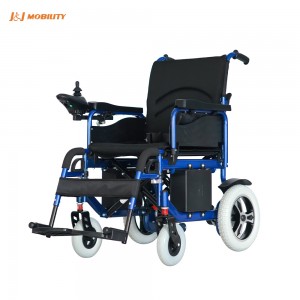Manual Wheelchair vs. Electric Wheelchair: Which One to Choose?
Choosing between a manual wheelchair and an electric wheelchair can be a difficult decision, as each type has distinct advantages and disadvantages. This article explores the key differences to help you make an informed choice.
Manual Wheelchair
A manual wheelchair is powered by the user’s arms and hands, making it a self-propelled option. Designed for portability, it is lightweight and easy to store. Here are some advantages:
Portability: Manual wheelchairs are lightweight, foldable, and easily fit in a car trunk or on public transport.
Cost-effective: Generally more affordable than electric models, making them budget-friendly.
Physical Exercise: Using a manual wheelchair offers cardiovascular benefits and helps strengthen the upper body.
Maneuverability: With a smaller turning radius, manual wheelchairs are easier to navigate in tight spaces.
Independence: Users can move themselves without relying on external power sources.
However, there are also some drawbacks:
Physical Strain: Pushing a manual wheelchair can be tiring, especially for those with limited upper body strength.
Limited Range: The distance covered depends on the user’s stamina and strength.
Difficulty on Steep Inclines: Manual wheelchairs may struggle on steep hills or rough terrain.
Electric Wheelchair
An electric wheelchair, also known as a power wheelchair, is motorized and powered by an electric motor, offering greater convenience for users with limited mobility. Key advantages include:
Convenience: Easy to operate with minimal physical effort, allowing for smooth and effortless control.
Increased Range: Capable of traveling longer distances due to its external power source.
Comfort: Typically features padded seats and backrests for enhanced comfort during use.
Ability to Navigate Varied Terrain: Designed to handle steep inclines and rough surfaces, making them ideal for outdoor activities.
Safety Features: Equipped with brakes and anti-tip wheels, enhancing user safety.
However, electric wheelchairs also have some disadvantages:
Cost: They are generally more expensive than manual wheelchairs, which may limit accessibility.
Maintenance Needs: Require regular servicing to ensure optimal performance, potentially adding to costs.
Weight and Portability: Heavier and bulkier than manual models, making transportation more challenging.
Battery Life: Users must monitor battery levels to avoid running out of charge.
Learning Curve: New users may need time to learn how to operate and control the wheelchair effectively.
Conclusion
Both manual and electric wheelchairs have unique pros and cons. When making your choice, consider factors such as the user’s physical abilities, lifestyle, and intended environment. Manual wheelchairs are portable and affordable but require physical exertion and have a limited range. Electric wheelchairs offer convenience and comfort but come with higher costs and maintenance requirements. Ultimately, the best option will depend on individual preferences and needs.
Post time: Oct-19-2024


